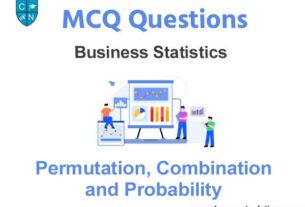Check the below NCERT MCQ Class 10 Social Science Chapter 3 Water Resources with Answers available with PDF free download. MCQ Questions for Class 10 Social Science with Answers were prepared based on the latest syllabus and examination pattern issued by CBSE, NCERT and KVS. Our teachers have provided below Water Resources Class 10 Social Science MCQs Questions with answers which will help students to revise and get more marks in exams
Water Resources Class 10 Social Science MCQs Questions with Answers
Refer below for MCQ Class 10 Social Science Chapter 3 Water Resources with solutions. Solve questions and compare with the answers provided below
Question. Which one is not related to watershed development project:
Options:
(a) Haryali
(b) Neeru-Meeru
(c) ArwariPaniSansad
(d) Van Mahotsava
Answer
D
Question. Neeru-Meeru program belongs to which state?
Options:
(a) Gujarat
(b) Rajasthan
(c) Punjab
(d) Andhra Pradesh
Answer
D
Question. Which group of states is highly affected by concentration of Arsenic:
Options:
(a) Rajasthan-Maharashtra
(b) Punjab-Haryana
(c) West Bengal-Bihar
(d) Madhya Pradesh-Chhattisgarh
Answer
C
Question. In which year national water policy was implemented?
Options:
(a) 2002
(b) 2008
(c) 2015
(d) 2005
Answer
A
Question. Environment Protection Act was implemented in:
Options:
(a) 1974
(b) 1986
(c) 1988
(d) 1997
Answer
B
Question. What is the rank of India in the world countries in the terms of Water availability per person p.a.?
(a) 129th
(b) 130th
(c) 131st
(d) 133rd
Answer
D
Question. The first & the only state in India which has made Roof Top Rain water Harvesting Structured compulsory to all the across the state is –
(a) Karnataka
(b) Tamil Nadu
(c) Kerala
(d) none of these
Answer
B
Question. The total volume of the world’s water is estimated to exist as ocean:
(a) 75.5%
(b) 85.5%
(c) 95.5%
(d) 65.5%
Answer
C
Question. It is predicated that nearly 2 billion people will live in absolute water scarcity in the year of –
(a) 2015
(b) 2020
(c) 2025
(d) 2030
Answer
C
Question. Roof top rainwater harvesting is the most common practice in-
(a) Shillong
(b) Guwahati
(c) Imphal
(d) Patna
Answer
A
Question. On which river has Nagarjun Sager Dam been constructed?
(a) River Coyana
(b) River Krishna
(c) River Godavari
(d) river Tapti
Answer
A
Question. How much %of the Earth’s Surface is covered with water?
(a) About 70%
(b) About 90%
(c) About 60%
(d) None of these
Answer
D
Question. According to Falkan Mark, water stress occurs when:
(a) water availability is less than 1000 cubic metre per person per day.
(b) there is no water scarcity.
(c) there is flood.
(d) water availability is more than 1000 cubic metre per person per day.
Answer
A
Question. Hirakud Dam is constructed on the river:
(a) Ganga
(b) Manjira
(c) Manas
(d) Mahanadi
Answer
D
Question. Underground tanks seen in Rajasthan to store rainwater for drinking is called:
(a) Tankas
(b) Khadin
(c) Ponds
(d) Kuls
Answer
A
Question. The only State which has made rooftop rainwater harvesting structure compulsory to all the houses is:
(a) Andhra Pradesh
(b) Karnataka
(c) Tamil Nadu
(d) West Bengal
Answer
C
Question. Which one of the following is not an adverse effect of irrigation?
(a) Irrigation changes cropping pattern
(b) Water intensive crops are grown in dry areas
(c) Salinisation of soil
(d) Increases crop yield
Answer
D
Question.Rooftop rainwater harvesting is a technique to recharge
(a) ground water
(b) river water
(c) lake water
(d) sea water
Answer
A
Question. Which of the following social movements is/ are not a resistance to multi-purpose projects?
(a) Narmada Bachao Andolan
(b) Tehri Dam Andolan
(c) Navdanya
(d) Chipko Movement
Answer
C
Question. Nagarjuna Sagar Dam is built on which river?
(a) Clenab
(b) Mahanadi
(c) Krishna
(d) Satluj
Answer
C
Question. On which one of the following rivers Mettur dam is constructed?
(a) River Kaveri
(b) River Krishna
(c) River Godavari
(d) River Mahanadi
Answer
A
Question. In which of the following states is the bamboo-drip irrigation system prevalent?
(a) Rajasthan
(b) Himachal Pradesh
(c) West Bengal
(d) Meghalaya
Answer
D
Question. How can we revolutionise agriculture?
A. By building dams
B. By releasing more water
C. By making rainwater reserves
D. through developing drought resistant crops and dry farming techniques
Answer
D
Question. What are the causes of the Indian rivers becoming toxic?
A. fossils
B. agricultural
C. Conservation of water
D. Industrialisation
Answer
D
Question. Why have multi-purpose projects and large dams come under great scrutiny and opposition recently?
A. The positioning the dams is not technically correct
B. Regulating and damming of rivers affect their natural flow causing poor sediment flow and excessive sedimentation at the bottom of the reservoir
C. Spread of disease
D. Dams built recently are not strong enough
Answer
B
Question.Which states does it cover?
A. Punjab, haryana, rajasthan Gujarat
B. Himachal Pradesh, Haryana, Ttarkhand, Up
C. Maharashtra, Madhya Pradesh, Gujarat and Rajasthan
D. Assam, Westbengal, sikkim, Arunachal Pradesh
Answer
C
Question. What was the traditional practice to store drinking water, particularly in Rajasthan?
A. ‘Rooftop rainwater harvesting
B. Wells
C. Small scale canals
D. Man made lake
Answer
A
Question. Which state is the first state in India which has made rooftop rainwater harvesting structure compulsory to all the houses across the state?
A. West Bengal
B. Meghalaya
C. Rajasthan
D. Tamil Nadu
Answer
D
Question. In Rajasthan what is rain water referred to as ?
A. Barsaat pani
B. Baarish pani
C. Palar pani
D. Badal pani
Answer
C
Question. Which of the following hydraulic structures is built in river basins?
(a) Lakes
(b) Dams
(c) Tanks
(d) Water harvesting
Answer
B
Question. On which of the following issues did the Narmada Bachao Andolan first focus?
(a) Benefits of irrigation to landless farmers
(b) Environmental issues related to submergence of trees under the dam water
(c) Rehabilitation of the people displaced due to construction of the dam
(d) Economic issues of wastage of money for the construction of the dam
Answer
B
Question. Which of the following structures are known as ‘tankas’?
(a) Underground tanks for storing rainwater harvested from roof tops for drinking purpose
(b) Tanks constructed on rooftops for storing rainwater
(c) Tanks constructed in agricultural fields to store rainwater
(d) Tanks constructed to store floodwater
Answer
A
Question. In which one of the following states was rooftop rainwater harvesting practised?
(a) West Bengal
(b) Haryana
(c) Rajasthan
(d) Punjab
Answer
C
Question. Against the construction of which one of the following multipurpose projects was the Narmada Bachao Andolan launched?
(a) Sardar Sarovar
(b) Bhakra Nangal
(c) Rihand
(d) Tehri
Answer
A
Question. In which one of the following areas, farmers in Gujarat were agitated over priority given to water supply in urban areas?
(a) Mahi river basin farmers
(b) Sabarmati basin farmers
(c) Narmada basin farmers
(d) Luni basin farmers
Answer
B
Question. Which one of the following rank is attributed to India in terms of water availability per person per annum?
(a) 121
(b) 127
(c) 133
(d) 136
Answer
C
Question. The state receiving rainfall less than 100 cm rainfall is
(a) Assam
(b) Rajasthan
(c) U.P.
(d) Bihar
Answer
B
Question. Hirakud dam is situated on River
(a) Narmada.
(b) Mahanadi.
(c) Sutlej.
(d) Ganga.
Answer
B
Question. One which river is the Hirakud dam constructed —
(a) Narmada
(b) Godavari
(c) Mahanadi
(d) Kaveri
Answer
C
Question. Roof water harvesting system is a compulsory structure in which state ?
(a) Bihar
(b) Meghalaya
(c) Tamil Nadu
(d) Karnataka.
Answer
C
Question. The state prone to floods is
(a) Rajasthan.
(b) Madhya pradesh.
(c) Assam.
(d) Delhi.
Answer
C
Question. A large population affecting water resources adversely due to
(a) building of dams.
(b) digging of canals.
(c) prayers offered for rain.
(d) higher food grain production.
Answer
D
Question. Which one of the following is the correct percentage of contribution of hydroelectric power to India’s total electricity produced?
(a) 15%
(b) 20%
(c) 22%
(d) 25%
Answer
C
Question. Which of the following factor is responsible for gully crosion of soil ?
(a) Wind
(b) Rainfall
(c) Snowfall
(d) Wheat
Answer
B
Question. Which state of India has made roof top rain water harvesting compulsory to all houses :
(a) Andhra Pradesh
(b) Tamil Nadu
(c) Kerala
(d) Karnataka
Answer
B
Question. With reference to water availability per person per year India’s rank in the world is
(a) 131st
(b) 133rd
(c) 137th
(d) 157th
Answer
B
Question. From which river ‘Indira Canal’ started for irrigtion of desert area of north Rajasthan ?
(a) Ravi river
(b) Chinab river
(c) Biyas river
(d) Satluj river
Answer
D
Question. The uses of multi-purpose projects is
(a) rain water harvesting.
(b) scenic beauty.
(c) electricity generation.
(d) All of the above
Answer
D
Question. Which one of the following is fixed as water stress level, when availability is less than cubic meter per person per day?
(a) 2000
(b) 3000
(c) 1000
(d) 500
Answer
C
Question. The total renewable water resources of India are estimated at
(a) 897 sq. km. per annum.
(b) 1897 sq. km. per annum.
(c) 2897 sq. km. per annum.
(d) 3897 sq. km. per annum.
Answer
B
Question. Which one of the following is right option for ‘guls’ or ‘kuls’ Himalayan region ?
(a) These are water bodies in western Himalayan region.
(b) These are water channels in western Himalayan region.
(c) These are diversion channels for agriculture in Himalayas.
(d) They were names of daughters of Himalayas.
Answer
C
Question. The rocks, through which the water seeps very fast, are called as :-
(a) Mushroom Rocks
(b) Hard Rocks
(c) Igneous Rocks
(d) Permeable Rocks
Answer
D
Question. Hirakud Dam is situated on the river
(a) Godavari
(b) Tapi
(c) Mahanadi
(d) Yamuna
Answer
C
Question. The states using roof rain water harvesting on extensive scale is
(a) Punjab.
(b) Delhi.
(c) Haryana.
(d) Rajasthan.
Answer
D
ASSERTION-REASON QUESTIONS
The following questions consist of two statements — Assertion (A) and Reason (R). Answer these questions selecting the appropriate option given below:
(a) Both A and R are true and R is the correct explanation of A.
(b) Both A and R are true but R is not the correct explanation of A.
(c) A is true but R is false.
(d) A is false but R is true.
1. Assertion (A) : In ancient India, along with the sophisticated hydraulic structures, there existed an extraordinary tradition of water-harvesting system.
Reason (R) : Rainwater, or palar pani, as commonly referred to in these parts, is considered the purest form of natural water.
Answer
B
2. Assertion (A) : Today, dams are built not just for irrigation but for electricity generation, water supply for domestic and industrial uses, flood control, recreation, inland navigation and fish breeding.
Reason (R) : Hence, dams are now referred to as multi-purpose projects where the many uses of the impounded water are integrated with one another.
Answer
C
3. Assertion (A) : In Gujarat, the Sabarmati-basin farmers were agitated and almost caused a riot over the higher priority given to water supply in urban areas, particularly during droughts.
Reason (R) : Inter-state water disputes are also becoming less common with regard to sharing the costs and benefits of the multi-purpose project.
Answer
C
4. Assertion (A) : Most of the objections to the projects arose due to their success to achieve the purposes for which they were built.
Reason (R) : Ironically, the dams that were constructed to control floods have triggered floods due to sedimentation in the reservoir.
Answer
D
5. Assertion (A) : It was observed that the multi-purpose projects induced earthquakes, caused water-borne disease.
Reason (R) : People had in-depth knowledge of rainfall regimes and soil types and developed wide ranging techniques to harvest rainwater, groundwater, river water and flood water in keeping with the local ecological conditions and their water needs.
Answer
A

We hope you liked MCQ Class 10 Social Science The Rise of Nationalism in Europe with answers provided above. Incase you have any questions please post them in the comments section below and our Social Science teachers will provide a response.


